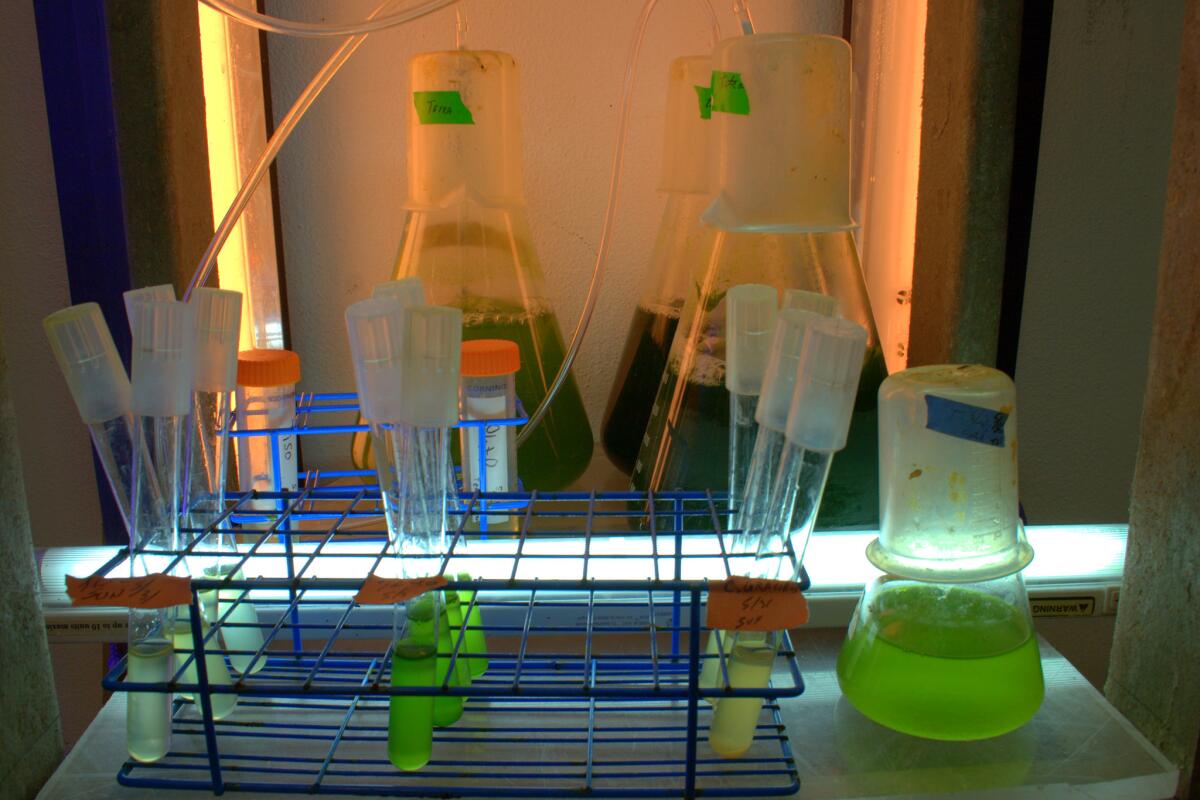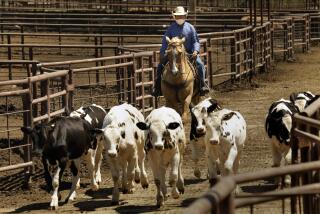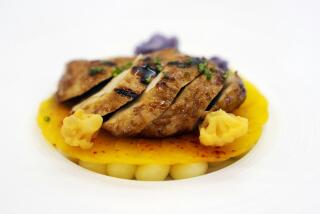Hungry for a helping of test tube meat? Maybe you should be

- Share via
If the notion of biting into a hamburger made from lab-cultured stem cells doesn’t make your mouth water, perhaps your brain can find it appetizing.
That’s the view of two Dutch professors who argue that meat grown in enormous test tubes, or bioreactors, can provide an ever more prosperous world with a plentiful, environmentally friendly and humane source of protein.
Cultured meat, they say, is the food of the future.
“Rising global demand for meat will result in increased environmental pollution, energy consumption and animal suffering,” the Wageningen University professors wrote Tuesday in the journal Trends in Biotechnology.
“As large parts of the world become more prosperous, the global consumption of meat is expected to rise enormously in the coming decades,” they wrote.
This growing demand for meat necessitates a “protein transition,” according to bioethicist Cor van der Weele and bioprocessing engineer Johannes Tramper. This transition will probably involve substituting some vegetable products for meat, keeping fewer animals on factory farms and possibly eating insects.
The authors envision a day when “every village” maintains a cultured meat facility in which muscle stem cells from pigs, cows, chicken, fish or any other animal are allowed to grow and reproduce in 5,200-gallon processing tanks.
The reproducing cells are suspended in a growth medium that provides them with nutrition, while mechanical paddles agitate the solution.
When the cell population reaches the desired density -- perhaps in a month, the authors say -- an enzyme and binding protein are added to the solution. At that point, the agitation stops and the tissue cells form small clumps and settle to the bottom of the tank.
Finally, the authors say, the tank is drained of the growing medium and the remaining “meat slurry” is pressed into a mincemeat-type cake and sold.
If the idea sounds far-fetched, consider the 2003 art project in which cultured frog meat was served as the cell-donor frog looked on, Van der Weele says.
“A tentative life-cycle analysis estimated that if cultured meat can be grown on a medium of algae, energy use will not be reduced dramatically, but greenhouse-gas emissions, land use and water use will: by more than 90% compared to European beef,” the authors wrote.
The system envisioned by the authors would be capable of producing roughly 28 tons of meat a year, assuming there was no waste, and could feed more than 2,500 people in that time, they said.
Of course, there are some very real economic and technological hurdles facing in vitro meat. The cost of the growth medium would directly affect the cost of the meat product, and producers would have to establish robust, continuous stem cell lines.
And then, of course, there’s the issue of whether people want to eat it.
“The cells have to be concentrated to minced-meat density and structured into a texture that is appetizing and with good mouth feel,” the authors wrote.
“Although the potential advantages of cultured meat are clear, they do not guarantee that people will want to eat it,” they wrote.







